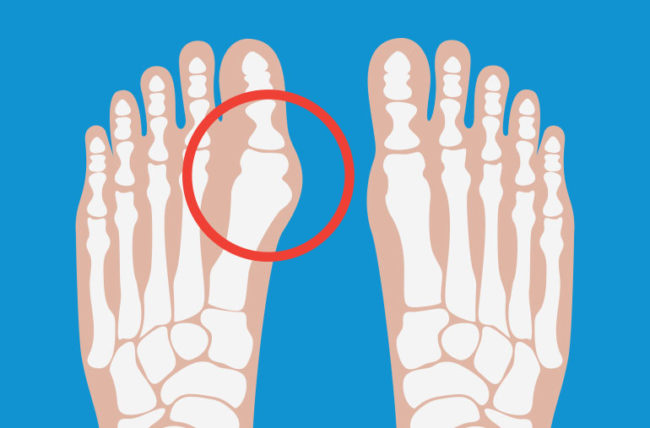It is a widespread misalignment of the big toe. The big toe deviates noticeably towards the outer edge of the foot and displaces the smaller toes there. This misalignment overloads the metatarsophalangeal joint of the big toe, which in the long term can lead to painful osteoarthritis of the big toe and this needs a bunion surgery.
Symptoms
The protruding ball of the foot at the metatarsophalangeal joint of the big toe becomes painfully inflamed and can swell. The big toe no longer points straight forward, but in the direction of the little toes. At the metatarsophalangeal joint of the big toe, calluses often form due to the conflict with the shoes at the point of exostosis overbone. In many cases, bursitis on the ball of the toe accompanies hallux valgus. The changed load distribution from the big toe to the neighboring little toes often leads to so-called transfer metatarsal pain. There are numerous conservative methods for treating hallux valgus and for relieving foot pain .

An early switch to healthy shoes with plenty of toe space and consistent conservative treatment can delay the progression of hallux valgus. You should therefore not wait too long with the therapy after the malalignment has occurred.
If the conservative treatment of hallux valgus no longer brings any improvement, the orthopedic surgeon will consider surgery. It should also be quick. The increasing stiffening of the big toe joint and the misalignment of the neighboring toes of the foot make hallux valgus more and more difficult to operate over time. Long-term consequential damage such as hallux rigidus arthrosis of the metatarsophalangeal joint of the big toe then becomes increasingly severe.
Hallux valgus pain:
- The ball of the toe, which is painful to pressure, becomes inflamed and presses against the inside of the shoe.
- Displaced little toes ( hammer toes , claw toes ) lead to further forefoot deformities.
- Metatarsal pain occurs because the big toe is no longer fully used and the little toes are overloaded.
- Arthritis pain in the metatarsophalangeal joint of the big toe is caused by wear and tear on the joint.
The conservative treatment options should be fully exhausted before the decision to operate. This is foreseeable after six months after conservative therapy. Only if the feet are much less resilient in everyday life, the hallux valgus is already painful and mobility is restricted, is it medically justified to recommend the operation. The conservative measures are primarily intended to contain the deformity. A real improvement through conservative treatment is normally only possible in the growing skeleton, i.e. in very young patients.

